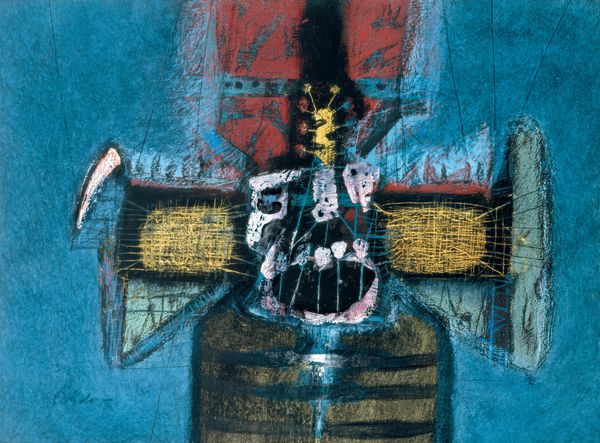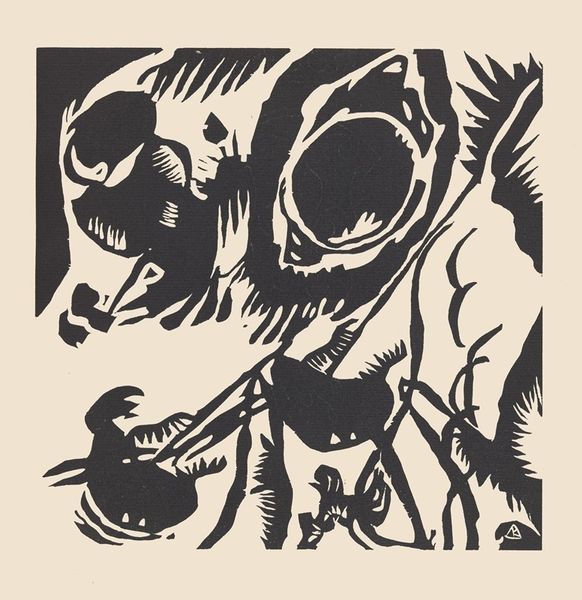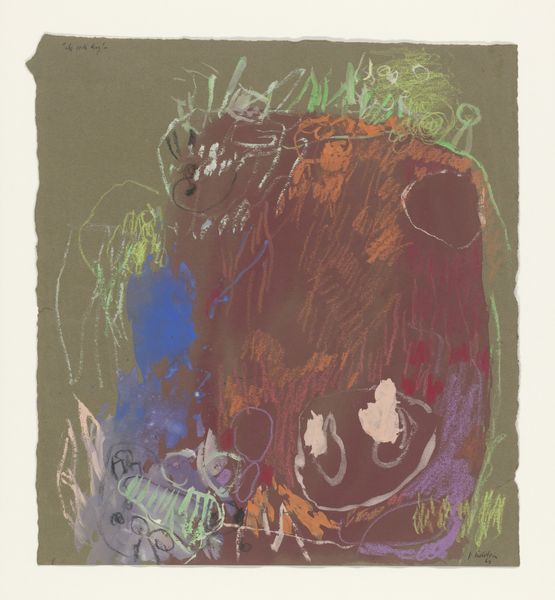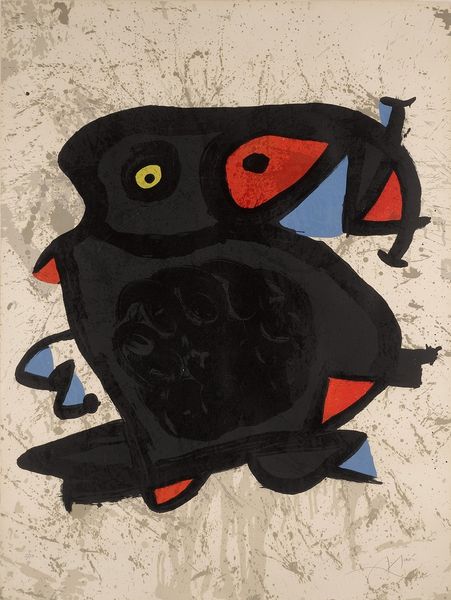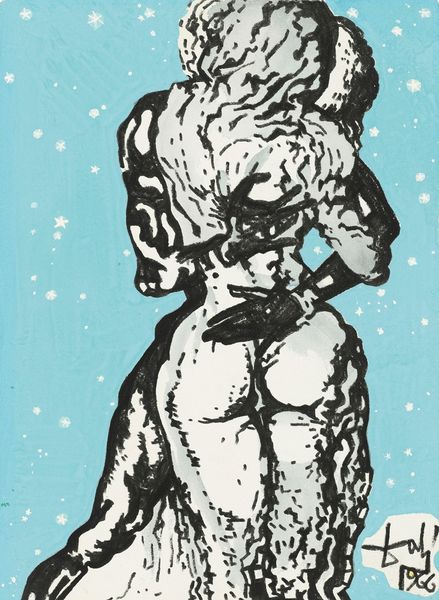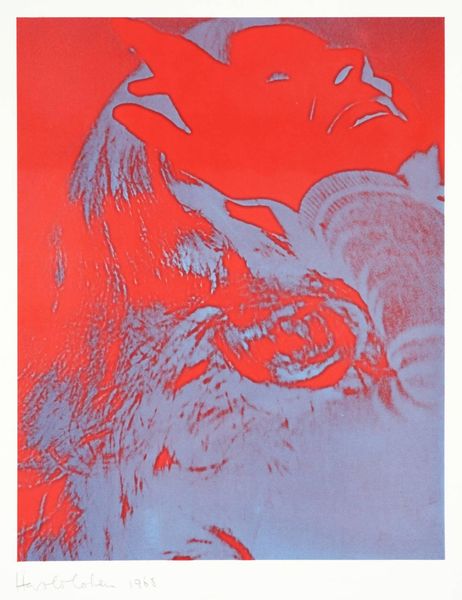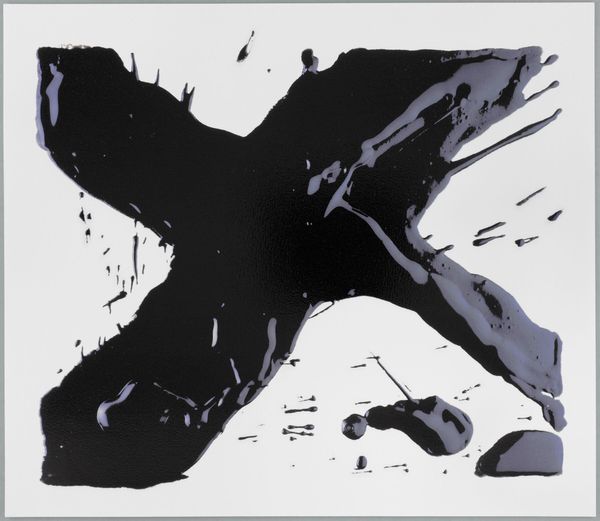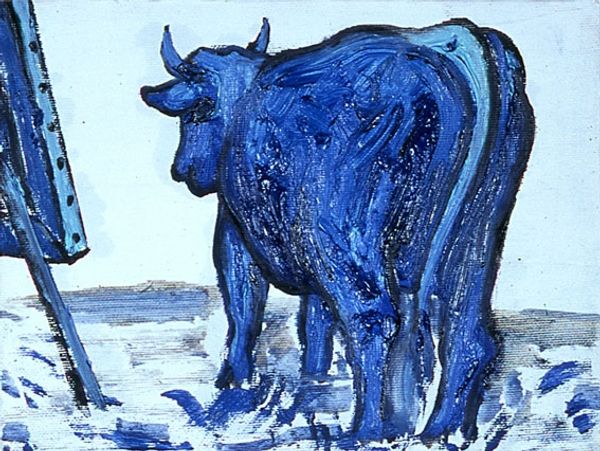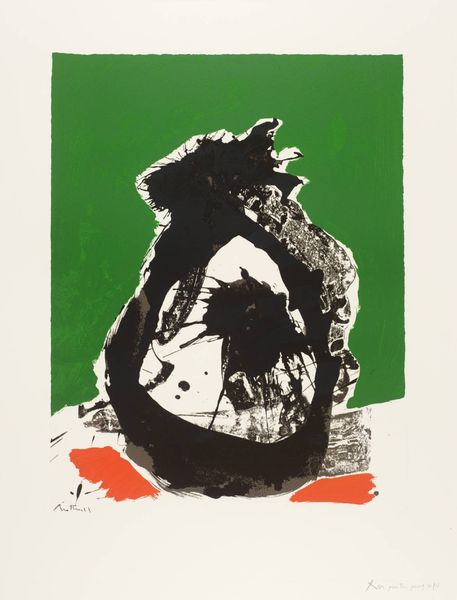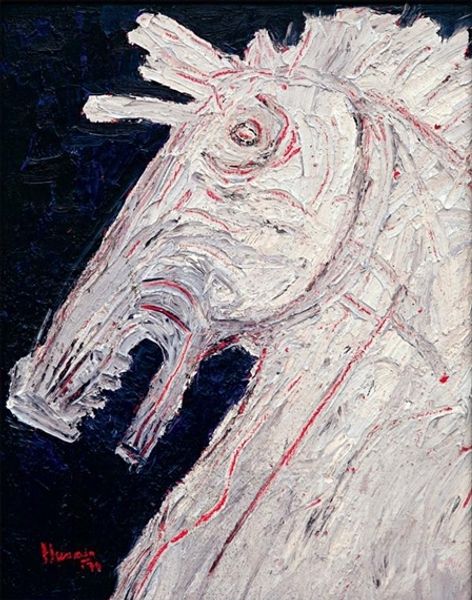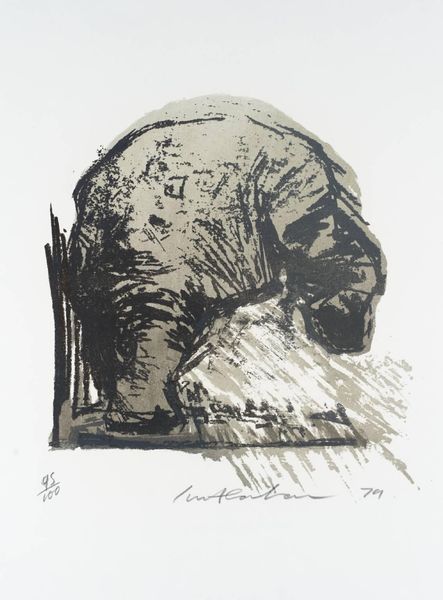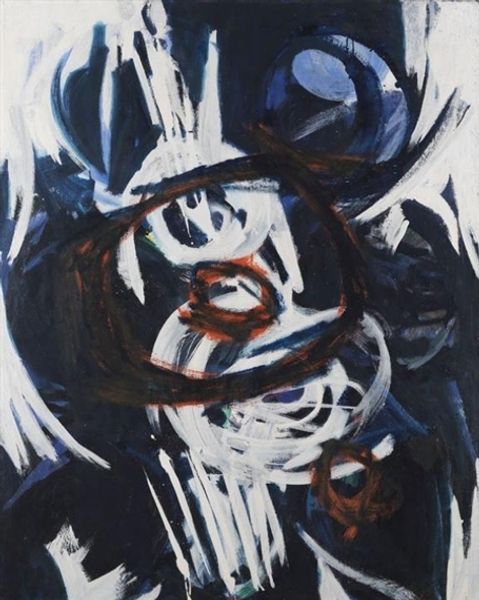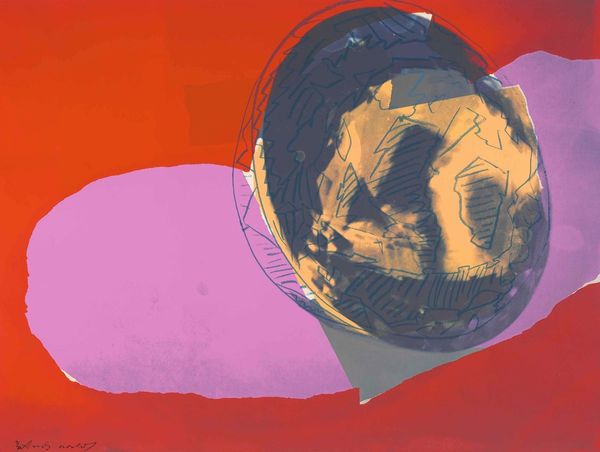
Copyright: Modern Artists: Artvee
Curator: What strikes you first about this print, the "Black Rhinoceros" by Andy Warhol, completed in 1983? To me, it's fascinating how Warhol continues to capture a subject using the screen-printing medium, while exploring a cause, like species preservation. Editor: It's got such a compelling melancholy. I feel this profound sadness radiating off of it. Maybe it's the contrast of the bright peach background with the rhino's heavy features, almost caricaturized... I can’t tell. It feels, well, weighted. Curator: Indeed, and I think that feeling extends to the rhino’s representation, a symbol of endangerment. You can feel how the bold colors, teal and cobalt for example, attempt to reanimate a creature, that during the creation of this artwork in the early 1980’s, was dealing with issues of near extinction due to poaching and habitat loss. Editor: I get that tension, totally. It’s like…we're splashing this iconic creature with a vibrant palette as if to declare its worth. Are we saving it? Is it about to disappear completely? The whole thing feels laced with both affection and dread. That jagged red line snaking around the horn makes it seem vulnerable and raw somehow. Like a neon sign blinking ‘Fragile.’ Curator: I couldn’t agree more. In examining it from the stance of conservationism, it raises many questions of the role artists, especially prominent artists such as Warhol, play within those critical dialogues. Does art change policy? Editor: Exactly. It becomes more than a picture; it becomes an elegy, maybe even a call to arms dressed up in Warhol’s cool aesthetic. A pretty picture masking some scary realities. Well, food for thought for the rest of the afternoon. Curator: I appreciate your poignant reading of this work. Thanks, as always, for your thoughts.
Comments
No comments
Be the first to comment and join the conversation on the ultimate creative platform.
